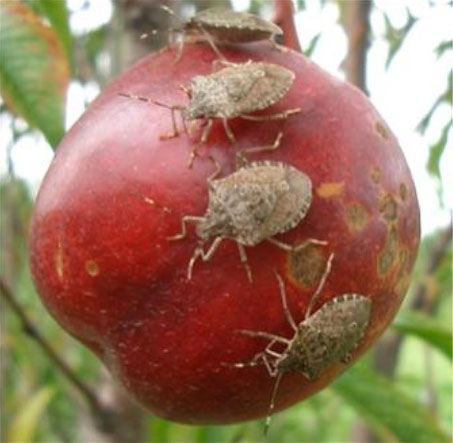
Exotic stink bug threatens nearly nationwide damage

"All that we do know for certain is that a tremendously large population went into overwintering in fall 2010. So, if they survived, there could be a very large population emerging in the spring," the story quoted Tracy Leskey, a research entomologist at the U.S. Agriculture Department's Appalachian Fruit Research Station in Kearneysville, W.Va.
The stink bug will feed on almost anything, including cherries, tomatoes, grapes, lima beans, soybeans, green peppers, apples and peaches. When it feeds, it leaves behind an ugly spot that renders the fruit or vegetable unmarketable.
UC Cooperative Extension farm advisor Stephen Vasquez and viticulture specialist Matt Fidelibus warned of the new pest's potential to harm California grape crops in a post to their new Viticulture blog. They wrote that damage can be substantial when BMSB populations are not identified early and managed appropriately. Growers and wineries are also concerned that the “stink” from any bugs accidentally crushed in wine or juice grapes could taint the product with off flavors.
"One might define this thing as the bug from hell," U.S. Congressman Roscoe Bartlett told the Chron. "If I was a mad scientist doing gene splicing and putting together a bug that would really be nasty and I was turning it loose on my enemy, I probably couldn't do a better job."
The Chronicle said the best hope for farmers that have brown marmorated stink bugs is the insecticide dinotefuran, the active ingredient in the commercial products Venom and Scorpion. The chemical compound is labeled by the Environmental Protection Agency for use on vegetables, grapes and cotton, but not in orchards, as it is in Japan and other Asian countries.
More information about the BMSB and current research is available in a streamed PowerPoint presentation by USDA's Lesky posted on the web.
